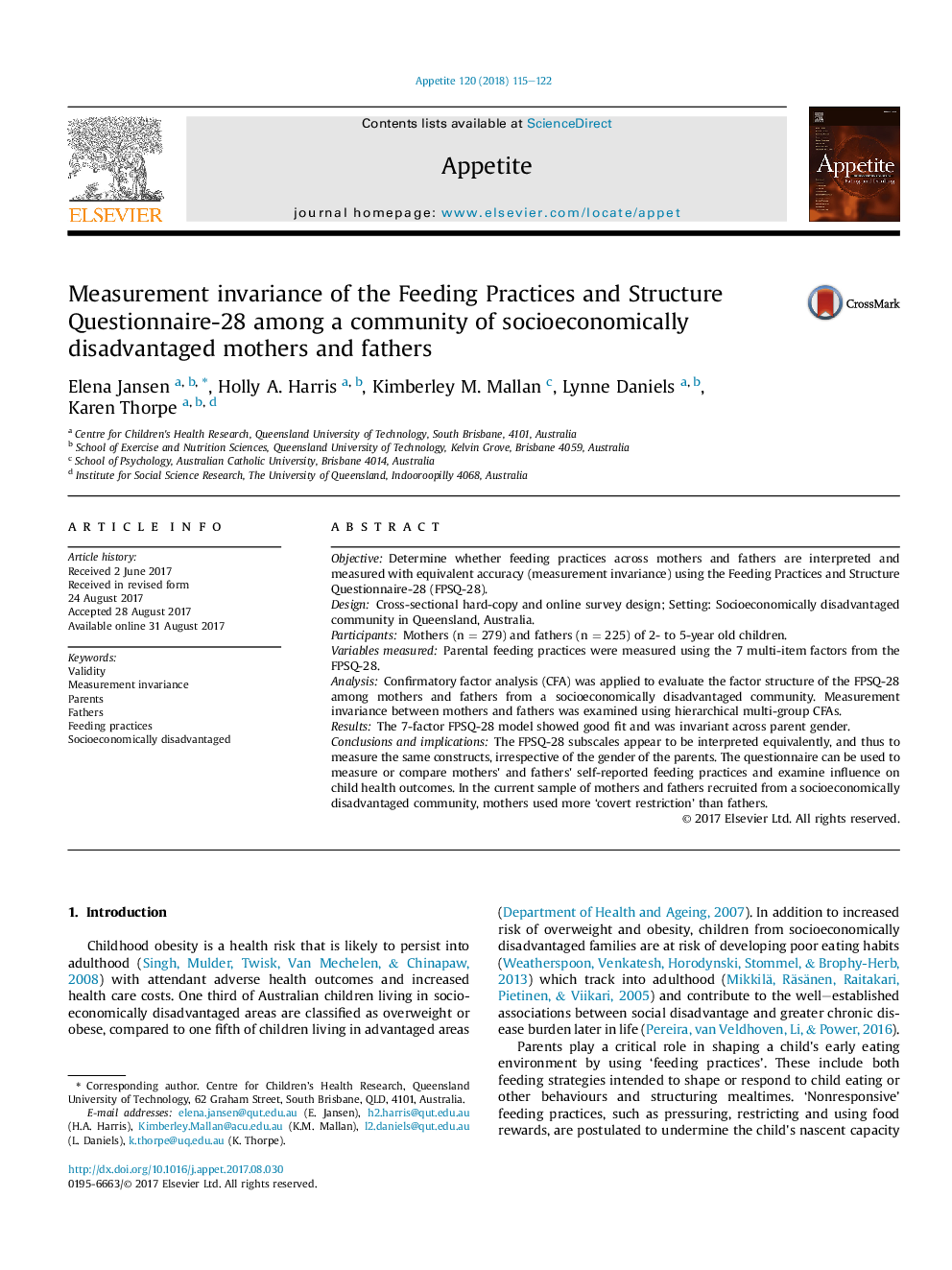| Article ID | Journal | Published Year | Pages | File Type |
|---|---|---|---|---|
| 5043924 | Appetite | 2018 | 8 Pages |
ObjectiveDetermine whether feeding practices across mothers and fathers are interpreted and measured with equivalent accuracy (measurement invariance) using the Feeding Practices and Structure Questionnaire-28 (FPSQ-28).DesignCross-sectional hard-copy and online survey design; Setting: Socioeconomically disadvantaged community in Queensland, Australia.ParticipantsMothers (n = 279) and fathers (n = 225) of 2- to 5-year old children.Variables measuredParental feeding practices were measured using the 7 multi-item factors from the FPSQ-28.AnalysisConfirmatory factor analysis (CFA) was applied to evaluate the factor structure of the FPSQ-28 among mothers and fathers from a socioeconomically disadvantaged community. Measurement invariance between mothers and fathers was examined using hierarchical multi-group CFAs.ResultsThe 7-factor FPSQ-28 model showed good fit and was invariant across parent gender.Conclusions and implicationsThe FPSQ-28 subscales appear to be interpreted equivalently, and thus to measure the same constructs, irrespective of the gender of the parents. The questionnaire can be used to measure or compare mothers' and fathers' self-reported feeding practices and examine influence on child health outcomes. In the current sample of mothers and fathers recruited from a socioeconomically disadvantaged community, mothers used more 'covert restriction' than fathers.
